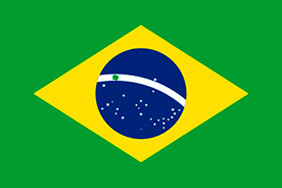
A Ambipar Environment, em parceria com o Grupo Jari, desenvolve dois projetos de carbono florestais nas áreas do grupo localizadas nos municípios de Laranjal do Jari, Vitória do Jari e Almerim, na divisa do estado do Pará com o Amapá. Enquanto o Projeto REDD+ Jari Pará, com área de 916 mil hectares, encontra-se na fase inicial de desenvolvimento, o Projeto REDD+ Jari Amapá, com área de 220 mil hectares, já verificou três safras (2011, 2012 e 2013) de créditos certificados pelo Verified Carbon Standard (VCS) e validados pelo Climate, Community and Biodiversity Standard (CCBS). O Projeto REDD+ Jari Amapá evita o desmatamento de mais de 11 mil hectares de floresta que seriam convertidos ao longo de 30 anos, e assim evita emissões na grandeza de 3,45 milhões tCO2e a atmosfera.
As vendas dos créditos de carbono florestais do Projeto REDD+ Jari Amapá tem sua remuneração revertida na promoção de agricultura familiar sustentável para 50 famílias de 8 comunidades da região do projeto. Desde o início do projeto áreas de pastagem e culturas agrícolas improdutivas deram lugar a Sistemas Agroflorestais mais eficientes e áreas de regeneração florestal, a partir do fornecimento de suporte técnico, elaboração de Planos de Uso das áreas, e acesso a insumos e equipamentos aos agricultores da região. Além disso, parte da receita dos créditos de carbono é investida em pesquisas científicas em biodiversidade: a área abriga pelo menos 2.800 espécies de flora e aproximadamente 2.000 espécies de fauna, sendo 150 destas ameaçadas de extinção. Este fato confere o nível ouro em biodiversidade do Climate, Community and Biodiversity Standard (CCBS) ao projeto.
Neste contexto, os dois Projetos REDD+ Jari fazem sobreposição com a Reserva Nacional do Cobre e seus Associados (RENCA). Esta área, com cerca de 4,6 milhões de hectares, teve recente notoriedade internacional devido ao temporário decreto emitido pelo presidente da república determinando a extinção da reserva mineral estatal com o objetivo de regularizar a exploração mineral na área por empresas do setor privado. Após discussões entre diferentes agentes da sociedade, o governo brasileiro decidiu revogar o decreto de extinção da RENCA. Este acontecimento expos a notável riqueza de recursos naturais da área e fez surgir discussões sobre a sua exploração e seus prováveis impactos irreversíveis à biodiversidade local.
As iniciativas de REDD+ nesta região fazem contraponto a atividades de grande impacto ambiental, como a mineração, a partir da promoção da conservação florestal, reduzindo as emissões de gases de efeito estufa (GEE) e promovendo o desenvolvimento socioeconômico local sustentável, os quais valorizam a “floresta em pé” por meio do pagamento por serviços ambientais gerados pela redução do desmatamento e a degradação florestal.




